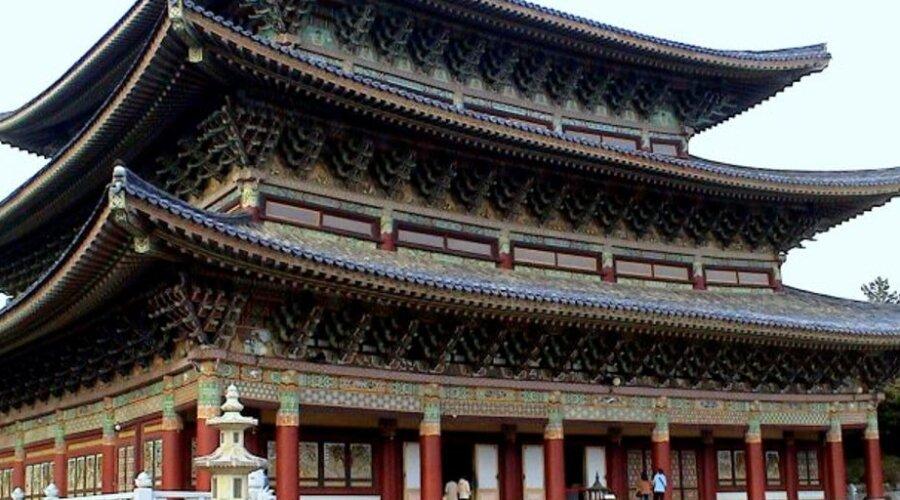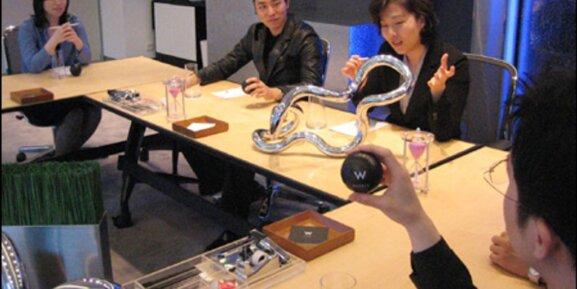“Tradition Meets Modernity: Experiencing South Korea’s Cultural Fusion”
South Korea, a country where tradition harmoniously blends with modernity, offers a unique cultural experience that captivates both locals and foreigners alike. From the bustling streets of Seoul to the serene landscapes of its countryside, South Korea presents a rich tapestry of cultural fusion. This article delves into various aspects of South Korean culture, exploring how historical heritage seamlessly integrates with contemporary trends across fashion, cuisine, architecture, and more.
Key Takeaways
- Seoul exemplifies the fusion of old and new, with its historical districts coexisting alongside modern cultural hubs.
- Korean street fashion reflects a dynamic blend of traditional influences and modern global trends, driven by influencers and a strong sense of individuality.
- Culinary experiences in South Korea are a testament to the harmonious blending of traditional flavors with modern culinary techniques.
- The evolution of Korean arts and crafts highlights the integration of ancestral techniques with contemporary design and technology.
- The ongoing development of K-Culture showcases the younger generations’ appreciation and revitalization of traditional Korean elements.
Seoul: A Time Capsule of Tradition and Innovation

Exploring Historical Districts
Seoul, a city where tradition meets modernity, offers a unique journey through its historical districts. Places like Insadong not only preserve the old charm with their antique shops and traditional teahouses but also blend seamlessly into the modern vibe of the city. Walking through these areas, you can feel the pulse of history while experiencing the comforts of the present.
The Rise of New K-Culture
The dynamic streets of Seoul are the birthplace of the new K-Culture wave. From K-Pop to Korean drama, the city’s influence is undeniable. It’s fascinating to see how traditional elements are woven into contemporary cultural expressions, making Seoul a global cultural hub.
Blending Old and New Architectures
In 2010, Seoul was named UNESCO’s "City of Design". The city doesn’t boast monumental architecture but showcases a unique blend of old and new designs. This fusion is evident as you walk through neighborhoods where modern skyscrapers and historic buildings coexist, creating a visually stunning landscape.
The Pulse of Korean Street Fashion

Innovative Trends and Global Influence
South Korean street fashion has been making waves in the global fashion scene, garnering attention for its unique blend of tradition and modernity. With a rapidly growing streetwear culture, Seoul has become a fashion capital where young Koreans and fashion enthusiasts express themselves through clothing. Let’s delve into the vibrant world of South Korean street fashion and explore some of its captivating trends.
The Role of Influencers and Trendsetters
South Korean street fashion, a vibrant blend of tradition, modernity, and global influences, showcases an innovative approach to style that captivates fashion enthusiasts worldwide. The fusion of minimalism, gender-neutral fashion, and nostalgic nods to the 90s has transformed Seoul into a dynamic fashion capital. With influencers, trendsetters, and a burgeoning market of streetwear, the impact is profound and far-reaching.
Nostalgic and Gender-Neutral Styles
South Korean street fashion is gaining global attention for its unique blend of tradition and modernity. Influenced by K-fashion, Korean street fashion encompasses diverse styles that fuse together to create a standout look. Minimalism with a twist is a prominent theme, and gender-neutral fashion is breaking boundaries. Nostalgia for the 90s is also prevalent, and high-end luxury brands are seamlessly integrated into casual wear. Overall, the vibrant and evolving street fashion scene in South Korea is poised to influence global fashion trends for years to come.
Culinary Adventures in South Korea

Traditional Flavors Meet Modern Twists
In the bustling streets of Seoul to the serene landscapes of Jeju, South Korean cuisine is undergoing a delicious revolution. Chefs are reimagining traditional dishes with modern techniques and international influences, creating a fusion that’s both nostalgic and innovative. Imagine a classic bibimbap with a twist of truffle oil or a kimchi burger that packs a punch.
Street Food and Fine Dining Fusion
The line between street food and fine dining in South Korea is blurring. Food stalls and high-end restaurants are borrowing elements from each other, offering a unique dining experience. From quick bites like tteokbokki being served in gourmet styles to Michelin-starred restaurants embracing the humble flavors of street food, the culinary landscape is vibrant and inclusive.
The Global Palate of Korean Cuisine
Korean food has captivated the global stage, not just for its bold flavors but for its ability to adapt and evolve. Restaurants around the world are now featuring Korean dishes, and international chefs are eager to incorporate Korean techniques and ingredients into their menus. This global palate reflects a growing appreciation for Korea’s culinary heritage and its seamless adaptation to modern tastes.
Art and Craftsmanship in Modern Korea
Ancestral Pottery and Contemporary Design
Korean tradition is a very special one, where centuries-old customs and craftsmanship seamlessly integrate with contemporary design. Digging deeper into the country’s history unearths ancestral pottery and early folklore amongst its oldest roots. Jump forward to today, and references from Neolithic artefacts are merged with modern technologies to connect the past with the present and forge a.
The Evolution of Korean Crafts
The catwalk at Seoul Fashion Week, for example, becomes a theater of artistry, showcasing designs that pay homage to centuries-old craftsmanship while pushing the boundaries of modern fashion. From the intricate embroidery depicting Korean folklore to the use of vibrant colors inspired by traditional art, each garment tells a story that transcends time. Designers delve into the heritage of Korean fashion, infusing their creations with a profound sense of identity and pride.
Integrating Technology with Tradition
With a focus on sustainability, many Korean designers incorporate eco-friendly practices and local artisans into their creative processes, adding an ethical dimension to the world of couture. In the hands of Korean designers, couture becomes a canvas for storytelling, and each stitch tells a tale of Korea’s past, present, and future in the global fashion panorama.
The New Wave of K-Culture

Young Generations Embracing the Old
Today, K-Culture is no longer solely focused on the ultra-modern, high-tech “newness” that South Korea has become known for. The new, younger generations are moving into and celebrating the older buildings, neighborhoods, cafés, and restaurants in Seoul. They’re not just bringing their fresh energy to these spaces but are also blending into the “old” Seoul and creating something entirely new.
Creating New Cultural Spaces
Our approach of bringing the new to the old is not unique to us; it is embedded in our culture. As a Korean brand, we are inspired by our Korean culture, often referred to as K-Culture, which blends dynamic modernity and ancient tradition. This blend is evident as new cultural spaces pop up, where traditional elements like hanbok and calligraphy are celebrated alongside modern K-pop and K-dramas.
The Impact of K-Stories Film
It is this new K-Culture that we wanted to explore in our K-Stories film as these stories reflect our commitment to bringing together the best of our heritage and our latest innovations. This film showcases how the younger generation is not only preserving but also evolving the cultural landscape, making it relevant for today’s global audience.
Nature and Urban Life: A Harmonious Blend

Green Spaces in Urban Settings
In the heart of Seoul, amidst the bustling city life, green spaces offer a breath of fresh air. Parks and gardens are strategically placed to provide urban dwellers a quick escape to nature. These green havens are essential for balancing urban development with environmental sustainability.
Preserving Natural Environments
Efforts to preserve natural environments within urban areas are crucial. Conservation initiatives ensure that natural habitats are protected despite urban expansion. This not only supports biodiversity but also enhances the quality of life for city residents.
The Role of Public Parks in City Life
Public parks play a pivotal role in enhancing urban living. They serve as communal spaces where people of all ages can gather, relax, and engage in recreational activities. The integration of these parks into city planning reflects Seoul’s commitment to improving the quality of life of its citizens.
The Future of Tradition in South Korea

Heritage as a Key to Modernity
In South Korea, the deep reverence for heritage is not just about preserving the past; it’s about shaping the future. Korean tradition is a very special one, where centuries-old customs and craftsmanship seamlessly integrate with contemporary design. This philosophy is crucial as it holds the keys to the Korea of tomorrow, merging Neolithic artefacts with modern technologies to connect the past with the present and forge a vibrant future.
Sustaining Cultural Identity
The blend of historical cultural heritage with modern culture offers a unique experience not only to locals but also to foreigners. This distinct harmony allows everyone to explore and enjoy local cultures, fashion, natural environments, and unique food, thanks to these preserved local identities. It’s fascinating to see how traditional items, once considered stiff and stuffy, are now viewed as hip and trendy, especially among the youth.
Innovations Shaping the Future
The younger generation is actively participating in this cultural fusion, incorporating artifact-inspired merchandise into their daily lives. This engagement is not limited to fashion but extends to various aspects of daily life, including the enjoyment of traditional markets. These markets not only offer a cozy atmosphere but also serve as a great place for authentic Korean foods, connecting people with the roots of Korean culture while embracing modernity.
Wrapping Up the Fusion
As we’ve explored the vibrant streets of Seoul and delved into the heart of South Korea’s cultural fusion, it’s clear that this nation is a unique blend of the old and the new. From the traditional hanboks seen in the bustling markets to the cutting-edge fashion on the streets, South Korea offers a captivating mix of history and modernity. Whether it’s through food, fashion, or technology, the country continues to honor its roots while embracing the future. What are your thoughts on this dynamic blend? Have you seen similar cultural fusions in other countries? Share your experiences and join the conversation on how tradition and modernity coexist in today’s world!
Frequently Asked Questions
What makes Seoul a unique blend of tradition and modernity?
Seoul uniquely blends its rich historical heritage with cutting-edge technology, making it a city where ancient palaces stand alongside skyscrapers, and traditional markets share spaces with modern shopping malls. This fusion creates a dynamic cityscape that reflects both the past and the future.
How does South Korean street fashion stand out on the global stage?
South Korean street fashion is known for its innovative blend of traditional influences and modern, gender-neutral styles. It incorporates minimalism with a twist, nostalgia for the 90s, and a keen sense of global trends, making it a standout in the international fashion scene.
What role do influencers play in South Korean fashion?
Influencers in South Korea play a crucial role in shaping trends and promoting new styles. They bridge the gap between traditional aesthetics and modern demands, influencing both local and international fashion enthusiasts through their social media platforms and public appearances.
How are traditional flavors incorporated into modern Korean cuisine?
Modern Korean cuisine creatively incorporates traditional flavors by blending classic ingredients with contemporary cooking techniques. This fusion results in innovative dishes that maintain the essence of traditional Korean tastes while appealing to a global palate.
What is the significance of public parks in urban South Korean life?
Public parks in South Korea serve as vital green spaces in urban areas, offering residents a respite from the city’s hustle and bustle. They play a crucial role in preserving natural environments and providing recreational spaces that enhance the quality of urban life.
How is technology integrated with traditional Korean crafts?
Technology in South Korea is integrated with traditional crafts to preserve ancient techniques while enhancing them with modern efficiency. This collaboration helps sustain cultural heritage and ensures that traditional crafts can adapt and thrive in the contemporary market.



